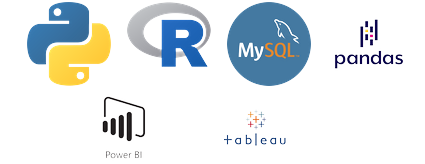Hello, future data scientist. With over a decade at the intersection of technology, data visualization, and career coaching, I’ve guided hundreds of professionals into thriving data careers. The path isn’t about memorizing algorithms; it’s about building a T-shaped profile—deep technical mastery combined with broad strategic business acumen.
This is your actionable, no-fluff roadmap to breaking into data science in 2025.
Step 1: Foundational Mindset & Prerequisites (The “Why”)
Before you code a single line, internalize this: Data science is a translational discipline. You translate business problems into data questions, and data insights into actionable business strategies.
✅ Prerequisites You Must Have:
- Quantitative Aptitude: Comfort with numbers, statistics, and logical reasoning is non-negotiable.
- Business Curiosity: A relentless desire to ask “why?” and “so what?”.
- Resilience: You will spend 80% of your time cleaning data and debugging models. Embrace the grind.
Step 2: The Technical Skill Stack (The “How”)
Build this foundation systematically. Depth beats breadth every time.
1. Programming & Databases:
- Python: The undisputed king. Master
pandasfor data manipulation,NumPyfor computations, andscikit-learnfor machine learning. - SQL: This is the most important skill. You cannot access data without it. Become proficient in complex queries, JOINs, and window functions.
- Bonus: R, Scala, or PySpark for big data contexts.
2. Statistics & Mathematics:
- Core Concepts: Descriptive stats, probability, distributions, hypothesis testing, and confidence intervals.
- Essential for ML: Linear Algebra (for algorithms) and Calculus (for model optimization).
3. Machine Learning:
- Supervised Learning: Regression, Classification (Logistic Regression, Decision Trees, Random Forests, SVMs, XGBoost).
- Unsupervised Learning: Clustering (K-Means), Dimensionality Reduction (PCA).
- Key Concept: Master the bias-variance tradeoff and model evaluation metrics (Accuracy, Precision, Recall, F1-Score, ROC-AUC).
4. Data Visualization & Storytelling:
- Tools: Learn Tableau or Power BI. They are critical for communicating insights to non-technical stakeholders.
- Python Libs:
Matplotlib,Seaborn, andPlotlyfor creating custom, impactful charts. - Principle: A graph is worthless if it doesn’t tell a compelling story.
5. Big Data Fundamentals (For 2025):
- Understand the concepts behind distributed computing. Familiarity with Hadoop and Spark is a significant career advantage.
Step 3: Build Your Practical Experience (The “Proof”)
You learn data science by doing data science. Theory is useless without application.
- Personal Projects (Your Portfolio Cornerstone):
- Don’t just do tutorial projects. Find a problem you’re passionate about.
- Examples: Analyze your Spotify listening habits, predict housing prices in your city, or scrape social media data for sentiment analysis on a topic you care about.
- Crucial: Document everything on GitHub. A clean README file explaining your process, findings, and code is more valuable than ten unfinished projects.
- Kaggle:
- Start with beginner-friendly competitions (Titanic, House Prices). Use them to learn the end-to-end workflow, not just to win.
- Internships & Freelancing:
- Apply for data analyst or junior data scientist roles. Even a short internship provides invaluable real-world context.
Step 4: Craft Your Professional Identity (The “Brand”)
In a crowded market, your profile must stand out. As a Digital Marketing specialist, I can tell you this is non-negotiable.
- Resume Tailoring:
- Quantify Everything: “Improved model accuracy by 15%” is good. “Improved logistic regression model accuracy by 15%, potentially reducing customer churn by 10% and saving an estimated $500k annually” is gold.
- Use keywords from job descriptions (e.g., “predictive modeling,” “A/B testing,” “data pipelines”).
- LinkedIn Optimization:
- Headline: “Aspiring Data Scientist | Python | SQL | Machine Learning | Leveraging Data to Drive Business Growth”
- Featured Section: Showcase your best GitHub projects, Tableau Public dashboards, and any certificates.
- Engage: Comment intelligently on posts by data science influencers. Write articles about your project learnings.
Step 5: The Job Hunt Strategy (The “Launch”)
- Target Roles: Don’t just aim for “Data Scientist.” Apply for Data Analyst, Business Intelligence Analyst, Junior Data Scientist,
and Machine Learning Engineer roles. These are often the stepping stones. - Prepare for Interviews:
- Technical Screen: Practice SQL queries on platforms like LeetCode and StrataScratch. Be ready to explain your code.
- Take-Home Assignment: Treat it like a real project. Clean code, clear documentation, and a summary of your findings are key.
- On-Site Interview: You will face questions on statistics, ML theory, and behavioral scenarios. Practice explaining complex concepts simply.
Step 6: Never Stop Learning (The “Edge”)
The field evolves daily. Your learning journey never ends.
- Specialize: Dive deep into a high-demand niche like Computer Vision, NLP, MLOps, or AI Ethics.
- Continuous Learning: Enroll in advanced specializations on Coursera (e.g., DeepLearning.AI, Johns Hopkins) or edX.
- Community: Join local meetups, online forums (r/datascience), and networks to stay inspired.
Final Insight
“The most successful data scientists I’ve mentored aren’t just the best coders; they are the most effective communicators and problem-solvers. They see the business problem behind the data. Focus on that, and the technical skills will serve your purpose, not define it.”
Enroll in our Data Science Course to get started
Your journey starts today. Build a project. Learn one new concept. Connect with one professional. Iterate, learn, and persist.
– Rachit Srivastava

